Henry C. Pitz wrote about Ben Stahl in the September 1950 issue of American Artist and made a point of reinforcing this aspect of Stahl's work by providing a step-by-step demonstration of an illustration assignment Stahl had recently completed for Today's Woman magazine.
"[Ben Stahl] uses models infrequently," wrote Pitz. "He draws with great ease from his imagination and usually his pictures grow from a series of quickly executed sketches. When the experimental sketches result in an exciting solution, he enlarges the sketch freely onto the board or canvas and begins to paint directly."
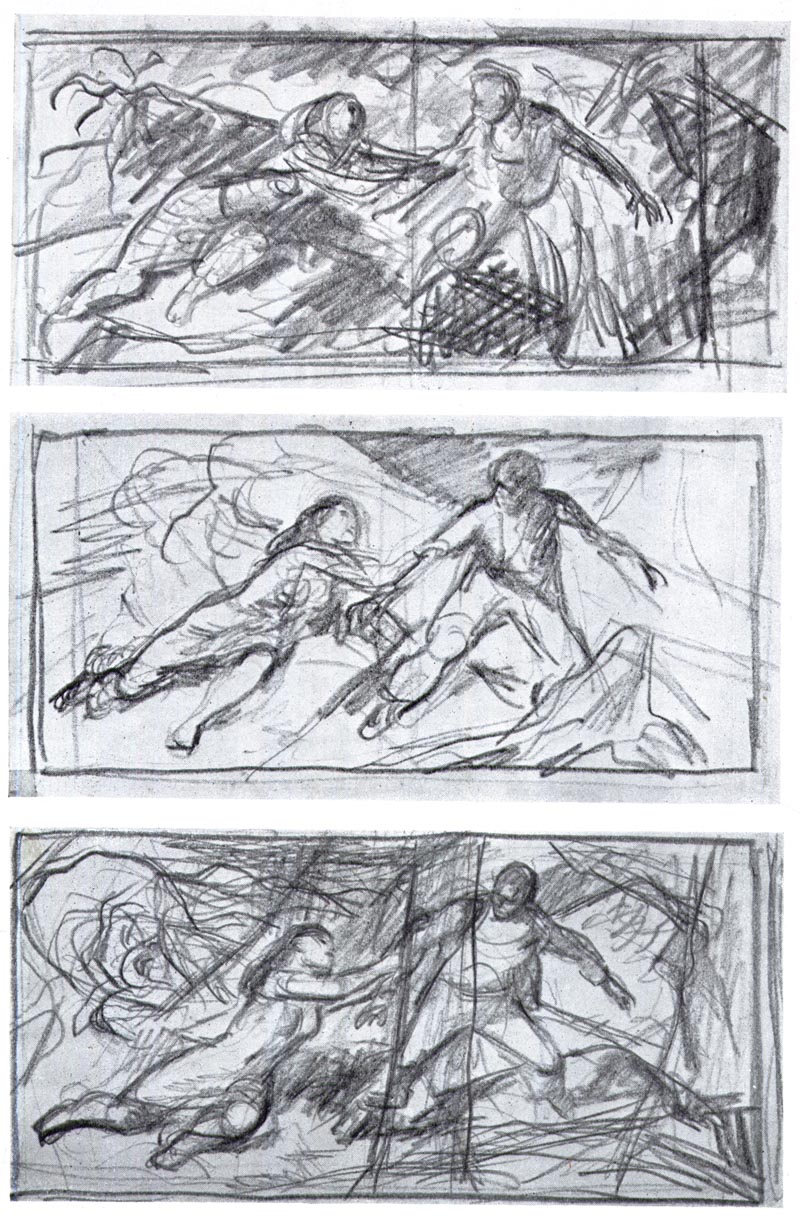
Stahl said, "I keep a picture flexible all the way to its completion. This permits changes and additions during the progressive stages of painting that, to me, result in better pictures. The problem of injecting life or spirit into a picture is difficult. But by keeping yourself free to change and modify the physical forms in a picture you will find the spiritual values and the life of the creation entering subtly, almost subconsciously into your composition."
Of course Ben Stahl understood that photo reference of models had its merits. As we can see, he had models pose for this particular assignment. But to qualify his intentions he wrote, "The photo shown here is one of a number used in this illustration. They were not much help through no fault but my own. I took these photos knowing full well what I wanted and no model could possibly get into the preconceived poses I had in mind. I did use small parts, such as a hand here, a fold there."
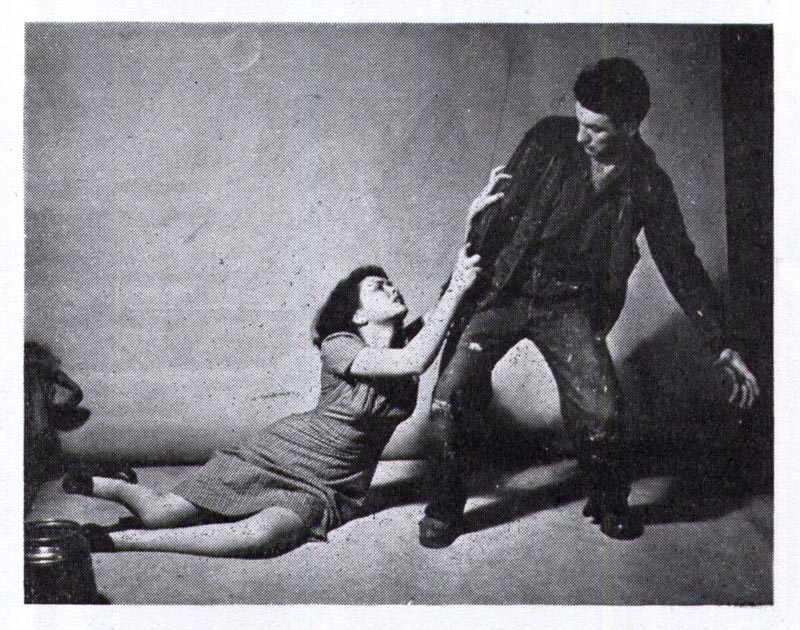
This next exploratory sketch speaks volumes about Ben Stahl's problem solving process when making a picture. The art director had asked Stahl to emphasize the girl's frustration in attempting to hold the man back. Stahl said that "this sketch was made to more clearly demonstrate that it is the abstract forms of the illustration which project drama and mood, with a minor helping hand from diagrammatic action and the reportorial aspects. The sketch could be even more abstract and still carry the story."
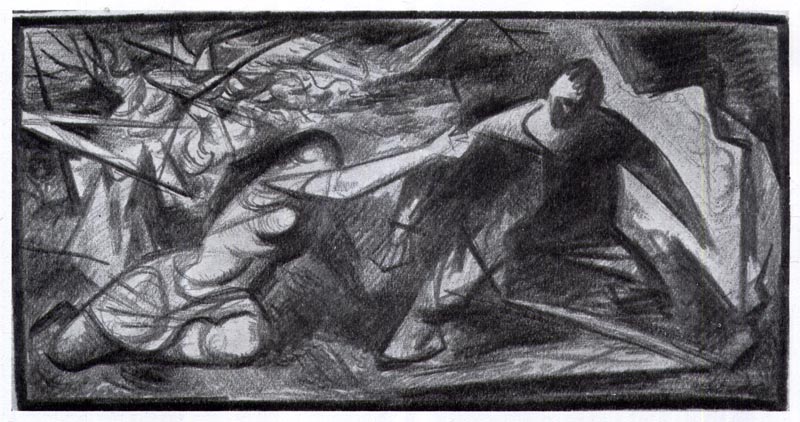
Stahl was intently interested in creating mood through strong composition, form and lighting and the sketch above was key to his analysis of the problem. He added, "I wish to point out how form serves two purposes: the creation of strong architectural structure and at the same time the creation of a mood."
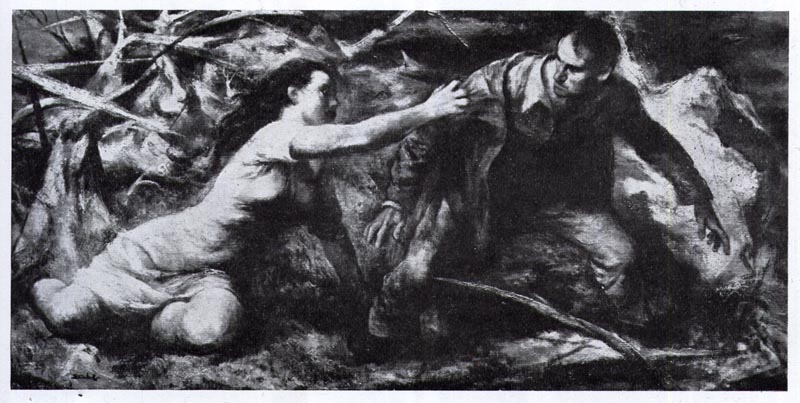
"The mood," wrote Stahl, "is the result of certain structures and arrangements of form as is aesthetic spirit."
Unfortunately I don't have a full colour scan of the piece presented in the demonstration, but below is another Ben Stahl illustration that might serve as a relative example of the conclusion of Stahl's illustrative process.
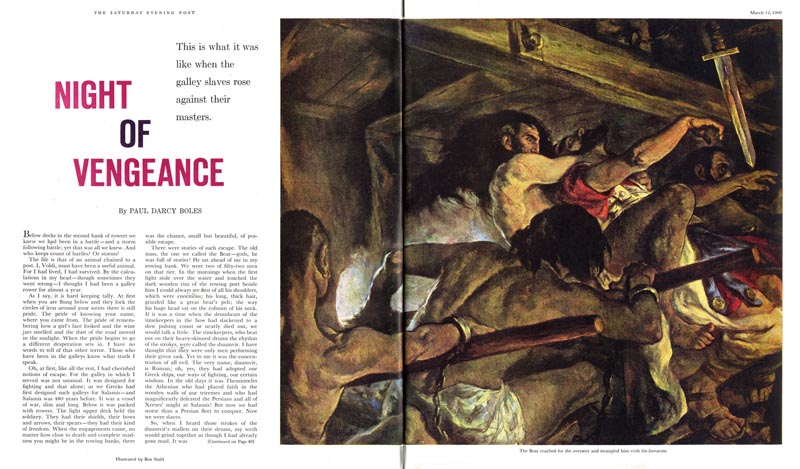
* My Ben Stahl Flickr set.






0 comments:
Post a Comment